What is osteoarthritis?
Osteoarthritis (OA) is the most common form of arthritis and affects about 30 million Americans. In most people it is a slowly progressive disease. The main cause of osteoarthritis symptoms is the breakdown of cartilage in the joints. Cartilage functions as the cushion between the bones of a joint. As the “wear and tear” of the cartilage gets worse, the joints become stiff and painful with activity. Some joints are more likely to develop osteoarthritis while others are spared. For example, osteoarthritis commonly affects the knee but not the ankle. Although there is no cure for the disease, there are effective treatments. The goals of therapy are to reduce pain and improve function.
Who gets osteoarthritis?
Osteoarthritis is a joint disease that most often affects middle-age to elderly people, and it occurs in all races. Women are more likely to develop it than men. Having family members with osteoarthritis increases someone’s risk. If a joint was significantly injured in the past (for example, a knee injury from football), it is more likely to become arthritic. Being overweight is also a risk factor for the disease, especially of the hip and knee.
What are the symptoms of osteoarthritis?
Osteoarthritis tends to affect commonly used joints such as the knee, hip, hands, and spine. The primary symptom is pain which is worse with activity and is relieved with rest. The joints are often stiff and tender. Swelling can occur due to fluid in the joint (“water on the knee”, for example). A crunching sound or grating feeling (called crepitus) can occur with joint movement. Boney enlargement of the joint may also develop because of bone spurs at the edge of the joint. The arthritis generally worsens slowly over time, although it may stabilize in some people.
How is it diagnosed?
There is no blood test for osteoarthritis. Instead, the diagnosis is based on the patient’s description of their symptoms, a physical examination, and imaging of the involved joints with x-rays. In some cases, other imaging tests such as ultrasound or MRI may be useful to tell the extent of disease or to help rule out other joint problems.
How is osteoarthritis treated?
There is no known cure for osteoarthritis. However, there are effective treatments. The primary goals of therapy are to reduce pain, improve function, and slow disease progression. Weight loss and physical therapy exercises are useful especially for arthritis of the knee, hip and spine. Assistive devices, such as a knee brace or a cane, can be helpful. Medications are often recommended including Tylenol (acetaminophen) or a nonsteriodal anti-inflammatory drug such as Advil (ibuprofen). Joint injections with corticosteroids (a cortisone shot) or with a form of lubricant (called hyaluronic acid) can give months of pain relief. In severe cases, when medical treatment is failing to adequately relieve pain and/or there is a major loss of function, surgical treatment may be an option.
Points to remember:
- Osteoarthritis is the most common form of arthritis and it can occur with other types of arthritis.
- At present, there is no cure for the disease.
- There are many effective therapies that can reduce pain and help maintain function
*For persistent joint pain that is interfering with your daily activities, see a rheumatologist to make the correct diagnosis and begin the proper treatment.


